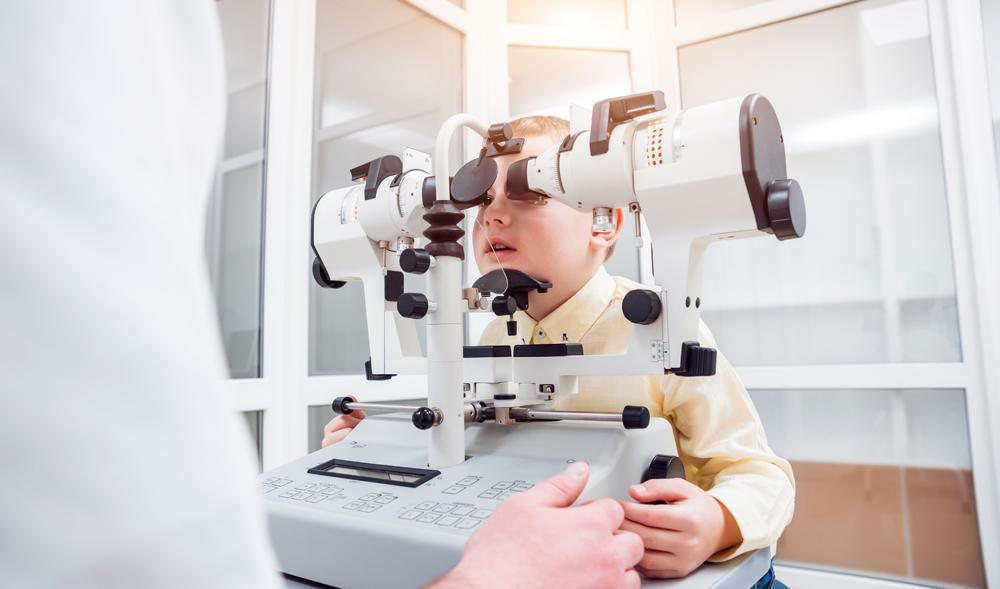Refractive Surgeries in AL: Enhance Your Vision with Specialist Care
Refractive Surgeries in AL: Enhance Your Vision with Specialist Care
Blog Article
The Role of Advanced Diagnostic Equipment in Identifying Eye Disorders
In the world of ophthalmology, the application of innovative diagnostic tools has revolutionized the very early recognition and management of different eye conditions. From finding subtle changes in the optic nerve to monitoring the development of retinal illness, these technologies play a pivotal role in improving the accuracy and efficiency of diagnosing ocular problems. As the demand for specific and prompt diagnoses remains to grow, the integration of sophisticated tools like optical comprehensibility tomography and aesthetic field screening has ended up being important in the realm of eye care. The elaborate interaction between technology and sensory techniques not only clarifies detailed pathologies but likewise opens up doors to tailored treatment approaches.
Importance of Very Early Medical Diagnosis
Very early diagnosis plays an essential duty in the reliable monitoring and therapy of eye conditions. By identifying eye disorders at a very early phase, medical care providers can supply ideal treatment plans tailored to the specific condition, eventually leading to better outcomes for people.

Technology for Identifying Glaucoma
Innovative diagnostic innovations play an important function in the very early detection and monitoring of glaucoma, a leading source of permanent blindness worldwide. One such innovation is optical coherence tomography (OCT), which provides detailed cross-sectional images of the retina, enabling the dimension of retinal nerve fiber layer density. This measurement is essential in assessing damages triggered by glaucoma. Another sophisticated device is visual field testing, which maps the sensitivity of a client's aesthetic area, aiding to identify any kind of areas of vision loss feature of glaucoma. In addition, tonometry is made use of to measure intraocular stress, a major risk aspect for glaucoma. This test is important as elevated intraocular stress can result in optic nerve damages. Moreover, more recent technologies like the use of expert system algorithms in examining imaging information are revealing encouraging lead to the very early detection of glaucoma. These advanced analysis tools make it possible for eye doctors to identify glaucoma in its onset, permitting for timely treatment and better monitoring of the disease to protect against vision loss.
Role of Optical Coherence Tomography

OCT's capability to quantify retinal nerve fiber layer thickness permits precise and objective measurements, helping in the early discovery of glaucoma even before aesthetic area problems emerge. Moreover, OCT innovation permits longitudinal tracking of architectural modifications over time, promoting individualized therapy strategies and timely treatments to aid preserve people' vision. The non-invasive nature of OCT imaging also makes it a preferred option for checking glaucoma progression, as it can be repeated regularly without creating discomfort to the individual. In general, OCT click over here plays an essential role in boosting the diagnostic accuracy and monitoring of glaucoma, ultimately adding to far better end results for individuals at risk of vision loss.
Enhancing Medical Diagnosis With Visual Field Screening
An important component in thorough sensory assessments, visual area screening plays an essential function in improving the analysis process for various eye problems. By examining the full extent of a patient's aesthetic area, this test provides critical info about the useful stability of the entire aesthetic pathway, from the retina to the visual cortex.
Aesthetic field screening is especially valuable in the medical diagnosis and management of problems such as glaucoma, optic nerve conditions, and different neurological diseases that can my company influence vision. With measurable measurements of outer and central vision, medical professionals can discover refined modifications that might suggest the presence or development of these conditions, even prior to visible signs and symptoms occur.
Additionally, aesthetic area testing enables the monitoring of therapy efficacy, assisting ophthalmologists customize therapeutic treatments to specific patients. eyecare near me. By tracking modifications in aesthetic field performance gradually, healthcare providers can make educated decisions regarding readjusting medicines, advising surgical interventions, or applying other proper actions to maintain or boost a client's aesthetic feature
Managing Macular Deterioration

Conclusion
In conclusion, advanced analysis tools play a crucial duty in recognizing eye disorders early on. Technologies such as Optical Coherence Tomography and visual field testing have actually greatly improved the accuracy and effectiveness of identifying problems like glaucoma and macular degeneration.
Report this page